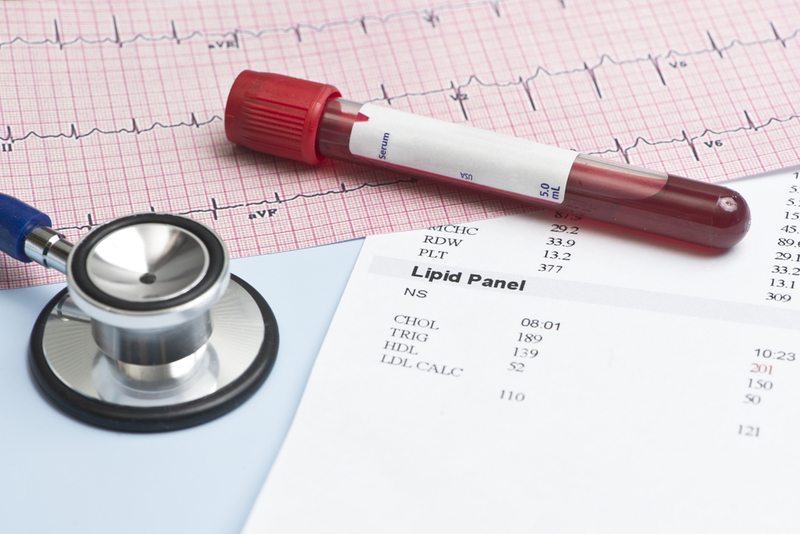New lipid blood test provides better risk prediction for heart attack and stroke
Baylor College of Medicine News Jul 10, 2018
Knowing your risk factors is key when it comes to preventing heart attack and stroke, and now researchers at Baylor College of Medicine have found that testing a specific type of triglyceride may be a better indicator for predicting risk of cardiovascular disease and stroke compared to just traditional risk factors.

The findings, which also point to a potential new treatment target to help prevent cardiovascular disease, appear in the latest issue of the Journal of the American College of Cardiology.
“A lot of information we have gathered over the years has indicated that high triglyceride levels increases the risk for cardiovascular disease. Since triglycerides and cholesterol are carried through the bloodstream in multiple particles known as lipoproteins, our focus was to take a closer look at the levels in those particles and how they affect outcomes,” said Dr. Christie Ballantyne, professor of medicine and chief of the sections of cardiology and cardiovascular research at Baylor.
Researchers focused on remnant lipoprotein cholesterol (RLP-C) and low-density lipoprotein triglycerides (LDL-TG). High levels of triglycerides are associated with an increase in both. Using data from the long-term, ongoing Atherosclerosis Risk in Communities (ARIC) study, designed to investigate the causes of atherosclerosis and its clinical outcomes, researchers added RLP-C and LDL-TG levels to the Pooled Cohort Equation, a 10-year risk prediction tool.
The RLP-C levels didn’t add any extra information; the researchers found that they were not associated with the risk of cardiovascular disease when combined with this risk prediction tool, Ballantyne said.
However, when LDL-TG levels were added, the researchers found that the levels of LDL-TG predicted not only heart attack but also stroke.
“Usually lipid measurements are not associated with risk for stroke, so this is the first time we are seeing LDL-TG have a positive association on predicting the risk of both heart attack and stroke,” said Dr. Anum Saeed, a clinical postdoctoral fellow in cardiovascular disease prevention (lipids and atherosclerosis) at Baylor and also with the Center for Cardiometabolic Disease Prevention. “This was a new finding; we normally don’t check these levels, but our results are showing us that this appears to be the best predictor of heart attack and stroke.”
There also were some interesting genetic findings, Ballantyne said. A genetic variant of APOE, known as APOE2, was found to have the strongest association with both RLP-C and LDL-TG. It was associated with higher RLP-C but lower levels of LDL-TG.
“We already know that APOE2 is associated with lower risk of cardiovascular disease; thus, the lower level of LDL-TG observed in these individuals suggests that reduced LDL-TG may play an important role in protection from cardiovascular disease,” Ballantyne said.
Dr. Ron Hoogeveen, associate professor of medicine–cardiovascular research and a coauthor of the study, said these findings may have important implications when it comes to treating patients.
“LDL-TG may be an important marker of atherogenic altered LDL metabolism or represent a lipoprotein particle with specific proatherogenic properties not detected by routine lipid measurements. Individuals with elevated LDL-TG levels may benefit from therapies that lower LDL-C levels and/or more rapidly clear triglyceride-rich lipoproteins from the blood, thereby lowering LDL-TG levels in these patients and potentially reducing their risk for cardiovascular disease.”
Saeed adds that it is important to remember that this is an observational study, which means that additional studies are needed to show whether lowering LDL-TG levels will help to prevent heart attack and stroke.
“We know that there is an emerging problem of obesity and diabetes and the risk profile has changed for many populations, so we are in need of a more accurate way to predict cardiovascular disease. These findings are pointing to a new way to assess risk but also to a potential treatment target,” Saeed said. “Our next step will be to see how lifestyle modifications or medications affect LDL-TG levels and if that affects outcomes of cardiovascular disease.”
-
Exclusive Write-ups & Webinars by KOLs
-
Daily Quiz by specialty
-
Paid Market Research Surveys
-
Case discussions, News & Journals' summaries
